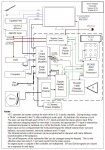fernando_g
Senior Member
From time to time, I like to browse IC datasheets to view new (to me) devices which would pique my interest. Double bonus if they are Picaxe-able.
As such I would like to share a particular Texas Instruments PGA2311, which should be a bonus for anyone thinking of building a high performance audio chain.
Picaxe controlled, of course. Very simple digital interface.
I am not building anything, not yet. Only wanted to share with this with fellow Forum dwellers.
The only caveat? The price, $11.19 USD. At least from DigiKey.
As such I would like to share a particular Texas Instruments PGA2311, which should be a bonus for anyone thinking of building a high performance audio chain.
Picaxe controlled, of course. Very simple digital interface.
I am not building anything, not yet. Only wanted to share with this with fellow Forum dwellers.
The only caveat? The price, $11.19 USD. At least from DigiKey.

